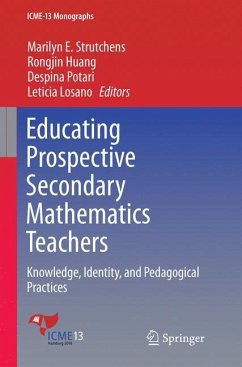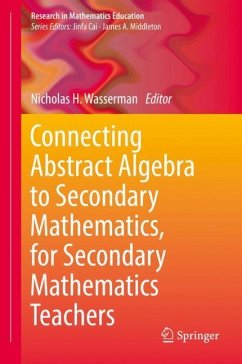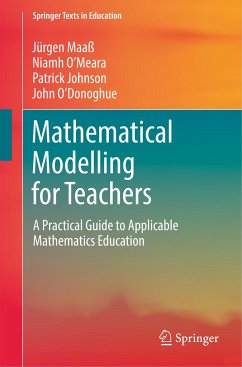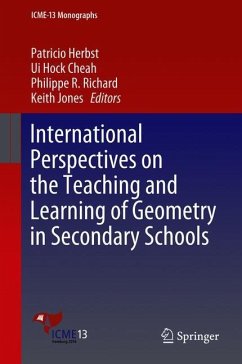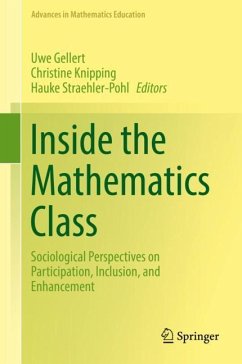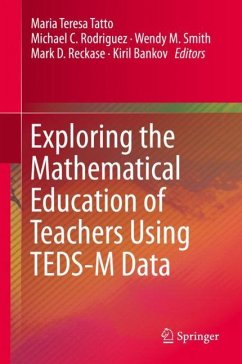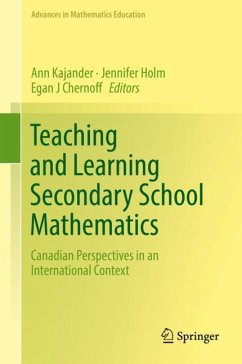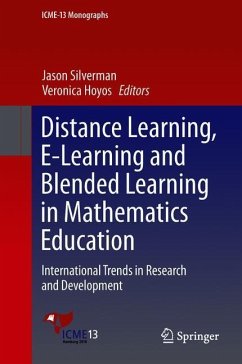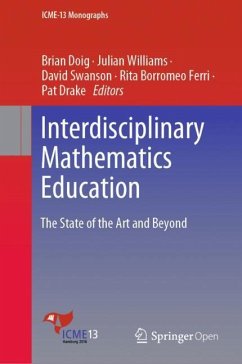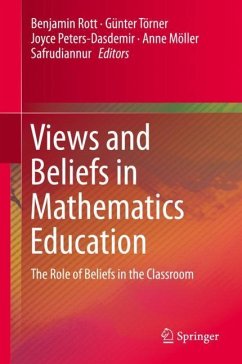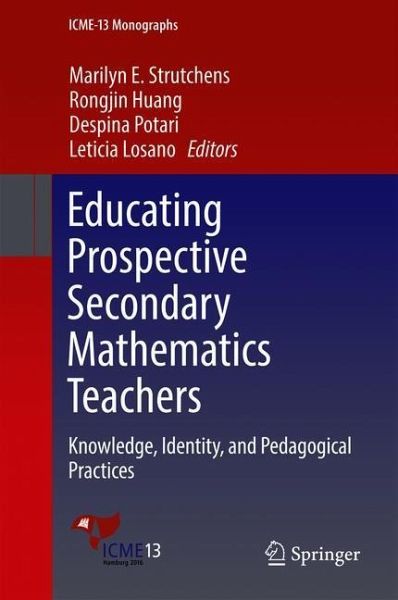
Educating Prospective Secondary Mathematics Teachers
Knowledge, Identity, and Pedagogical Practices
Herausgegeben: Strutchens, Marilyn E.; Huang, Rongjin; Potari, Despina; Losano, Leticia

PAYBACK Punkte
38 °P sammeln!
This book highlights innovative approaches to preparing secondary mathematics teachers. Based on empirical findings gathered in several countries on five continents, it provides a wealth of best practices for preparing secondary mathematics teachers, and discusses issues related to their professional and personal growth, such as identity, content knowledge, and pedagogical content knowledge which also includes knowledge of integrating technology into teaching and learning mathematics.Divided into four parts, the book focuses on field experiences, technologies, tools and resources, teacher know...
This book highlights innovative approaches to preparing secondary mathematics teachers. Based on empirical findings gathered in several countries on five continents, it provides a wealth of best practices for preparing secondary mathematics teachers, and discusses issues related to their professional and personal growth, such as identity, content knowledge, and pedagogical content knowledge which also includes knowledge of integrating technology into teaching and learning mathematics.
Divided into four parts, the book focuses on field experiences, technologies, tools and resources, teacher knowledge, and teacher professional identities. Some of the main threads running through the book are: the importance of university and school partners working together to ensure preservice secondary mathematics teacher' success in developing pedagogical strategies that lead toward students' mathematical engagement and achievement; the critical need for preservice secondary mathematics teachers to develop strong content knowledge and pedagogical content knowledge; and the importance of providing opportunities, during pre-service education, for developing prospective teachers ´professional identities.
Divided into four parts, the book focuses on field experiences, technologies, tools and resources, teacher knowledge, and teacher professional identities. Some of the main threads running through the book are: the importance of university and school partners working together to ensure preservice secondary mathematics teacher' success in developing pedagogical strategies that lead toward students' mathematical engagement and achievement; the critical need for preservice secondary mathematics teachers to develop strong content knowledge and pedagogical content knowledge; and the importance of providing opportunities, during pre-service education, for developing prospective teachers ´professional identities.



